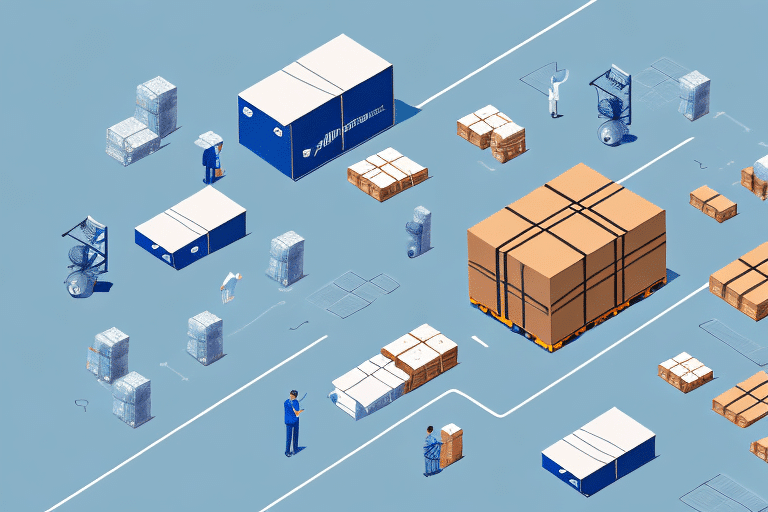How to Connect, Optimize, and Manage UPS for 3PL Fulfillment Providers
In the competitive landscape of e-commerce, third-party logistics (3PL) fulfillment providers play a crucial role in ensuring efficient operations for businesses. These providers manage everything from warehousing and inventory to order processing and shipping. Among the various shipping carriers, UPS remains a preferred choice for many 3PL providers. This article delves into best practices for connecting, optimizing, and managing UPS services to enhance 3PL fulfillment operations.
Understanding the Role of UPS in 3PL Fulfillment
UPS is integral to the fulfillment process, offering a range of shipping services that 3PL providers utilize to deliver packages from warehouses to customers efficiently. With options spanning from ground delivery to expedited air services, UPS ensures flexibility and reliability in meeting diverse shipping needs. Additionally, UPS provides comprehensive tracking information and shipping labels, enabling 3PL providers to monitor and manage shipments effectively.
Beyond basic shipping, UPS offers advanced tools and technologies to streamline fulfillment processes. For instance, UPS software solutions facilitate the creation of shipping labels, package tracking, and overall shipment management. Integration with major e-commerce platforms like Shopify and WooCommerce allows 3PL providers to automate order fulfillment, reducing manual data entry and minimizing errors.
Benefits of Using UPS for 3PL Providers
Choosing UPS as a shipping partner offers numerous advantages for 3PL fulfillment providers:
- Reliability: UPS has a longstanding reputation for dependable shipping services, ensuring timely deliveries.
- Speed: With a variety of shipping options, including next-day and same-day services, UPS caters to urgent delivery needs.
- Global Reach: Operating in over 220 countries, UPS enables 3PL providers to handle international shipments seamlessly.
- Advanced Technology: UPS's tracking systems and shipping technologies enhance shipment visibility and management.
- Competitive Pricing: Negotiated rates with UPS can lead to significant cost savings, benefiting both providers and their clients.
- Sustainability: UPS's commitment to reducing environmental impact through initiatives like alternative fuel vehicles aligns with the sustainability goals of many businesses.
These benefits collectively contribute to increased operational efficiency, cost-effectiveness, and enhanced customer satisfaction for 3PL providers.
Common Challenges in Managing UPS for 3PL Fulfillment
Despite its numerous advantages, managing UPS services within a 3PL framework can present certain challenges:
- System Integration: Integrating UPS with existing fulfillment systems can be complex, requiring specialized knowledge and resources.
- Shipping Costs: UPS shipping fees may be higher compared to some competitors, necessitating careful cost management.
- Service Level Selection: With multiple service levels available, selecting the most appropriate one for each shipment can be daunting.
- Customer Service: Issues with UPS customer service can impact the overall fulfillment experience.
- Package Tracking: Managing and tracking packages across multiple carriers can complicate the tracking process.
- Return Management: Efficiently handling returns through UPS requires robust processes to ensure accuracy and speed.
Addressing these challenges involves strategic planning, leveraging technology, and fostering strong partnerships with UPS.
Connecting and Integrating UPS with 3PL Systems
Effective integration of UPS with 3PL systems is foundational to optimizing shipping operations. This can be achieved through:
- API Integration: Utilizing UPS APIs allows for seamless data exchange between UPS and fulfillment systems, enabling real-time tracking and management.
- Shipping Management Software: Implementing software solutions that support UPS integration can automate shipping processes and reduce manual intervention.
Ensuring accurate data transmission is crucial. Information such as package weight, dimensions, and destination must be correctly input into the system to prevent errors and delays. Regular monitoring of the UPS connection helps identify and resolve issues promptly, maintaining the efficiency of the shipping process.
Additionally, leveraging UPS’s supplementary services like insurance and advanced analytics can enhance shipment security and operational insights. These tools allow 3PL providers to make data-driven decisions, further optimizing their fulfillment strategies.
Optimizing UPS Performance in 3PL Operations
Once integrated, several best practices can be employed to maximize UPS performance:
- Select Appropriate Service Levels: Match UPS service levels with customer expectations and shipment requirements to ensure satisfaction.
- Utilize Tracking Information: Provide customers with real-time updates using UPS tracking data to enhance transparency and trust.
- Leverage Advanced Technologies: Use UPS’s technological tools to manage shipments efficiently and minimize errors.
- Incorporate Shipping Costs: Factor UPS shipping fees into pricing models to maintain profitability while offering competitive rates.
- Monitor Performance Metrics: Regularly assess UPS performance indicators to identify and implement areas for improvement.
Establishing clear communication channels with UPS is also vital. Regular interactions can help address concerns, share feedback, and collaboratively work towards enhancing service quality.
Training staff on proper shipment handling and packaging according to UPS standards can reduce transit delays and damage, leading to higher customer satisfaction and lower operational costs.
Measuring UPS Performance and Efficiency
To continually improve UPS operations, 3PL providers should track key performance metrics:
- Delivery Time: Monitor the duration from shipment to delivery to ensure timely arrivals.
- Delivery Success Rate: Evaluate the percentage of successful deliveries to maintain high service standards.
- Shipping Costs: Analyze shipping expenses to identify opportunities for cost savings.
- Customer Satisfaction: Gather feedback to assess how UPS services meet customer expectations.
- Package Integrity: Track incidents of lost or damaged packages to improve handling processes.
By analyzing these metrics, 3PL providers can identify patterns, address inefficiencies, and implement strategies to enhance overall UPS performance, leading to streamlined operations and improved client satisfaction.
Future Trends and Innovations in UPS and 3PL Fulfillment
The logistics industry is continually evolving, with technological advancements shaping the future of UPS and 3PL fulfillment:
- Autonomous Delivery: The development of drones and autonomous vehicles promises to revolutionize last-mile delivery, enhancing speed and reducing costs.
- Artificial Intelligence: AI and machine learning are being integrated into logistics operations to optimize routing, forecasting, and inventory management.
- Blockchain Technology: Blockchain offers a secure and transparent method for tracking shipments and managing supply chains, reducing fraud and errors.
- Augmented and Virtual Reality: AR and VR technologies are being utilized for training, warehouse layout visualization, and assisting with order picking and packing.
- Environmental Sustainability: Innovations aimed at reducing carbon footprints, such as electric delivery fleets and sustainable packaging solutions, are gaining prominence.
Staying abreast of these trends allows 3PL providers to adopt innovative solutions, ensuring they remain competitive and capable of meeting the evolving demands of the e-commerce landscape.
Case Studies: Successful Implementation of UPS in 3PL Fulfillment
Examining real-world examples of 3PL providers effectively utilizing UPS can offer valuable insights and best practices:
- Enhancing Efficiency: A leading 3PL provider integrated UPS’s API with their warehouse management system, resulting in a 20% reduction in order processing time.
- Cost Savings: By leveraging UPS’s negotiated rates and optimizing shipping routes, another provider achieved a 15% decrease in shipping costs.
- Improved Customer Satisfaction: Implementing UPS’s real-time tracking and automated notifications led to a measurable increase in customer satisfaction scores.
These case studies highlight the tangible benefits of strategically integrating and managing UPS services within 3PL operations, demonstrating the potential for enhanced performance and profitability.
Conclusion
UPS remains a pivotal partner for 3PL fulfillment providers, offering a blend of reliability, speed, and advanced technological solutions. By understanding UPS's role, addressing integration and management challenges, and implementing best practices, 3PL providers can optimize their shipping operations, reduce costs, and elevate customer satisfaction. Embracing future trends and innovations will further empower 3PL providers to stay ahead in the dynamic e-commerce landscape, ensuring sustained growth and efficiency.






















